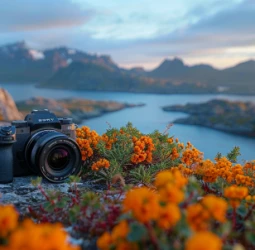Photography has long been known as a powerful medium for storytelling, and when it comes to narrative photography, it takes on a whole new level of significance. Narrative photography is the art of using images to tell a story, convey an emotion or capture a moment in time. It goes beyond simply taking a photograph and delves deeper into the realm of visual storytelling.
At its core, narrative photography is about creating a narrative or a sequence of events through a series of photographs. It is a way of expressing ideas, perspectives, and emotions through the power of images. Unlike traditional photography, where a single image is captured, narrative photography takes the viewer on a journey, unfolding a story as they move from one photograph to the next.
One of the key techniques used in narrative photography is sequencing. Instead of just taking a single photograph, photographers use a series of images that are interconnected and build upon each other to create a story. The images are carefully curated and presented in a specific order, allowing the viewer to follow the narrative as it unfolds. This sequencing can be achieved through various methods, such as using a specific color palette, composition, or theme, to tie the images together.
Another essential aspect of narrative photography is the use of visual metaphors and symbols. These are powerful tools that add depth and meaning to the images, allowing the viewer to interpret the story in their own unique way. Visual metaphors are images that represent an idea or concept, while symbols are objects that hold a specific meaning or significance. When used effectively, they can evoke deep emotions in the viewer and add layers of meaning to the narrative.
Lighting, composition, and perspective are also important elements in narrative photography. The way these techniques are utilized can significantly impact the mood and tone of the story. For instance, using low light and shadows can create a sense of mystery or tension, while a high-angle shot can convey vulnerability or weakness. Every element within a photograph plays a crucial role in enhancing the narrative and creating a powerful visual story.
One of the most significant benefits of narrative photography is its ability to capture the essence of a particular moment or event. By capturing a series of images, photographers can tell a story that documents and preserves important moments in time. It allows viewers to experience the event for themselves, evoking emotions and connecting with the story on a personal level.
In today's digital age, where images are abundant, narrative photography has become more important than ever. In a world where we are bombarded with images every day, narrative photography offers a refreshing change. It allows us to slow down and truly engage with a story, rather than just scrolling past a single image.
In conclusion, narrative photography is a powerful form of visual storytelling that has the ability to captivate and engage viewers. By utilizing a range of techniques, such as sequencing, visual metaphors, and composition, photographers can create a narrative that speaks to the heart and soul of the viewer. It goes beyond just capturing a moment in time; it creates a story that will be remembered and cherished for years to come. So next time you pick up your camera, think about the story you want to tell and let the power of narrative photography guide you.
At its core, narrative photography is about creating a narrative or a sequence of events through a series of photographs. It is a way of expressing ideas, perspectives, and emotions through the power of images. Unlike traditional photography, where a single image is captured, narrative photography takes the viewer on a journey, unfolding a story as they move from one photograph to the next.
One of the key techniques used in narrative photography is sequencing. Instead of just taking a single photograph, photographers use a series of images that are interconnected and build upon each other to create a story. The images are carefully curated and presented in a specific order, allowing the viewer to follow the narrative as it unfolds. This sequencing can be achieved through various methods, such as using a specific color palette, composition, or theme, to tie the images together.
Another essential aspect of narrative photography is the use of visual metaphors and symbols. These are powerful tools that add depth and meaning to the images, allowing the viewer to interpret the story in their own unique way. Visual metaphors are images that represent an idea or concept, while symbols are objects that hold a specific meaning or significance. When used effectively, they can evoke deep emotions in the viewer and add layers of meaning to the narrative.
Lighting, composition, and perspective are also important elements in narrative photography. The way these techniques are utilized can significantly impact the mood and tone of the story. For instance, using low light and shadows can create a sense of mystery or tension, while a high-angle shot can convey vulnerability or weakness. Every element within a photograph plays a crucial role in enhancing the narrative and creating a powerful visual story.
One of the most significant benefits of narrative photography is its ability to capture the essence of a particular moment or event. By capturing a series of images, photographers can tell a story that documents and preserves important moments in time. It allows viewers to experience the event for themselves, evoking emotions and connecting with the story on a personal level.
In today's digital age, where images are abundant, narrative photography has become more important than ever. In a world where we are bombarded with images every day, narrative photography offers a refreshing change. It allows us to slow down and truly engage with a story, rather than just scrolling past a single image.
In conclusion, narrative photography is a powerful form of visual storytelling that has the ability to captivate and engage viewers. By utilizing a range of techniques, such as sequencing, visual metaphors, and composition, photographers can create a narrative that speaks to the heart and soul of the viewer. It goes beyond just capturing a moment in time; it creates a story that will be remembered and cherished for years to come. So next time you pick up your camera, think about the story you want to tell and let the power of narrative photography guide you.



 admin
admin















